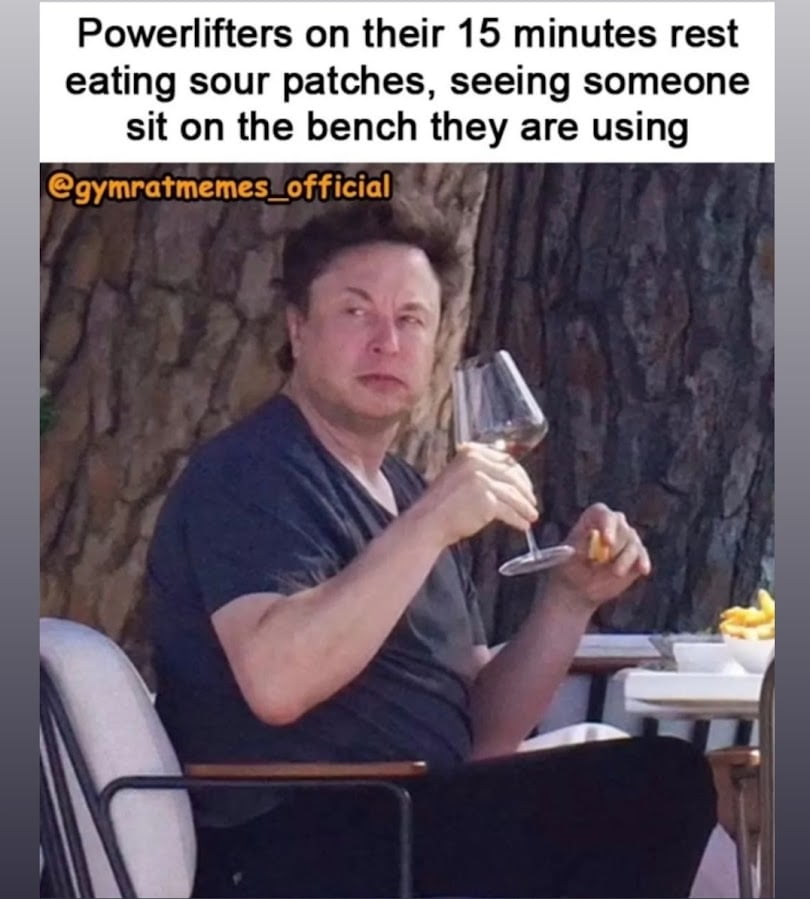[ad_1]
When it comes to training, it can quickly become overwhelming. If you distance yourself from the guidance, Instagram accounts, and YouTube videos, and look at strength training (or training in general for that matter) from a wider perspective, it all boils down to
Living organism undergoes stress, takes a break from stress, and then adapts to stress.
It’s essentially as simple as that. It’s easy to lose sight of the basic training principles and start believing that it is more complex than that. Or that having read extensively and having a good grasp of the science allows one to depart from that concept and move on to creating elaborate periodization schemes and specific exercises.
The most confused or misguided training approaches I encounter online or opinions are often two or three steps away from this line of thinking. An example of this could be
Issue: “I want to sprint faster”
Line of thought: “I don’t spend much time on both feet in my sport, my joint angles never really go below 90 and I want to be explosive. I should focus on something more specific to what I want to improve or excel at.”
Solution: Performing single leg half split squats using dumbbells combined with single leg jump efforts like split squat hops.
Outcome: Reduced force production, diminished speed, and compromised muscle growth and adaptation. Alternatively, we could have a program that involves lifting heavy weights (squat, split squat, half squat, leg press, ssb squat, etc.), sprinting (sprints, weighted sprints, plyometrics, throws), and carrying out full range of motion lifts, even better unilaterally, to expose joints and muscles to training demands to address weak points and induce targeted growth. This might appear less sophisticated to someone with a superficial understanding but is a much better preparation method.
The main distinction for me is that the second approach examines the attributes one intends to develop and then selects training interventions that best cultivate those attributes before striving to improve.
The more steps it takes to reach your goal, the less effective your training is likely to be. That’s where I appreciate the concept of the mobile pane, because as the leaps in reasoning decline, so does the effectiveness of your training.


The Mobile Pane – grounded in managing workloads.
The mobile pane or taking a snapshot of time and using that in my decision-making process has been a habit of mine, striking a balance between wanting to be as effective as possible with the time I have with myself or an athlete and being practical. When I began coaching people online, I used to work in blocks of 4-5 weeks. Any pragmatic person working with individuals would soon see how blocks are highly inefficient. You lay out 4-8-12 weeks of training, all interconnected (meaning for it to be effective, the workloads need to be completed sequentially), and the athlete falls ill, gets injured, or can’t attend workouts due to work or family commitments, rendering your 4-8-12 week plan useless. If you continue working in the same paradigm of fixed blocks of time, you have to recreate a modified plan in the same level of detail as before.
When dealing with a large group of people, most will be able to follow the block, making it easier to adapt to the few who can’t due to any of the aforementioned reasons. Trying to customize for a large group requires much more effort than creating blocks and personalizing ad hoc, and the opposite holds true for individuals.
While working in Rugby, I was much more involved in following sports science research, particularly field sport relevant sports science. Tim Gabbet was just releasing a lot of his work using GPS and rugby players to introduce the concept of the acute chronic work ratio
It’s essentially a moving average of the past three weeks of training load, measured using RPE x TIME (Arbitrary Load Units) or another separate or more objective metric like total distance through the use of GPS. You’d be surprised at how well GPS total distance and AU matched up with each other. This is a concept that has been in my mind ever since. I don’t think it’s particularly useful for a sport like powerlifting where the load is so small that it would lead to odd training decisions and programs and from my knowledge, it hasn’t really been shown to have any real relationship with strength training (outside of its effect on a wider rugby team program, for example).
However, it has led me to develop the mental model of the mobile pane of training. It is something I use when programming for individuals, aiding the framing of decision-making for training loads and weeks.
What is the mobile pane?
The mobile pane is a snapshot of the athlete’s training in the past “arbitrary” amount of time, typically the last 3-6 weeks, which can assist in making a training decision.
An example from real life.
Observing the progression of a lifter throughout a 12-week peak into a competition, we note three weeks of intensified endurance-focused strength training followed by a planned 4-week functional overreach and a 5-week taper/peak into the competition. The first deviation occurred at week 5/12, marked by notably higher RPEs during the workout than anticipated.
Considering the preceding 4 weeks of training completed as planned, it was surprising to encounter this unexpected spike in training intensity. Nonetheless, the decision was made to maintain the current course and monitor its development.
Subsequently, the lifter’s performance exceeded expectations during the following week’s 5×5 workout, reporting an RPE of 7-8, despite an anticipated range of 8-9. However, the subsequent week witnessed failure to achieve the required volume load.
Consequently, the coaching decision was to implement a deload and pivot, utilizing the accumulated work from the previous 6 weeks to pivot from an athlete-led or RPE-influenced setup to ensure optimal fatigue management.
Even after attempting the top overreach workout again, the lifter failed to meet the required volume load by an even wider margin. The next 1.5 weeks prioritized recovery with only 2 weeks of training to taper off while still maintaining competition-level intensity.
The pivot eventually yielded a 4% increase, albeit on the lower end of the anticipated outcome, considering the training framework leading up to the competition.
The above serves as an example of a longer-term plan (12 weeks into the competition) detailed in a more granular fashion, utilizing the training window to guide decision-making. Rather than blindly adhering to the program’s trajectory, we continually assess our performance against expectations and make decisions based on the observed trajectory.
We utilize a relevant estimated maximum percentage to set training loads within the desired range and utilize sets, reps, and rest times to drive training adaptation towards the intended direction.
Outline the plan broadly and refine the details as we progress.
This is where the concept of a moving window comes into play. When formulating an annual plan, detailed minutiae is not a primary concern. Instead, significant dates (such as competitions, holidays, and other commitments) are noted and used to outline the optimal utilization of time for developing the athlete’s capacity over the training year.
Planning 1-3 weeks ahead initially, we then adjust based on weight log information, training videos, and athlete feedback before the start of each training week. Real-time communication between athlete and coach allows for ad-hoc adjustments, although the time commitment required is not conducive to the coach’s work-life balance.
| Current week -6 | Evaluation??? |
| Current week -5 | Evaluation?? |
| Current week -4 | Evaluation? |
| Current week -3 | Evaluation |
| Current week -2 | Evaluation |
| Current week -1 | Evaluation |
| CURRENT WEEK | Evaluate and adjust before and during the week |
| Current week +1 | Detail to be filled in at the end of the previous week |
| Current week +2 | Detailed plan in place |
| Current week +3 | Detailed plan in place |
This approach allows the training direction to evolve. If an athlete progresses faster than anticipated (with RPEs lower than expected), decisions can be made to maintain their current level to consolidate progress or to expedite progress.
If the training block does not progress as expected (with RPEs exceeding expectations), decisions can be made to maintain the current level for a week or two, slow the expected progress, repeat a training week, or pivot completely if the planned trajectory proves unfeasible.
Many trainers and gyms adopt the label X.X.T.S., with “TS” denoting training systems, yet hardly any of them employ a systems-led approach. An uncomplicated setup like this provides the opportunity to plan and monitor progress over time, adjusting as per the results produced. Regular review is imperative, and decisions are informed by reviewing the evidence from the previous week’s training results.
Moreover, it enables the accumulation of observations and testing of training hypotheses for each individual, facilitating the creation of the necessary training setup and examination of how they respond to the previous training structure.
An example is how specific training weeks impact the lifter’s sessional performance and overall well-being/muscle stiffness, demonstrating the capability to formulate a training setup that enables maximal performance in each session.
Employing a similar approach for self-coaching involves outlining training goals and focuses for months and weeks in advance, planning training 1-2 weeks ahead, and making decisions on training load based on performance from the previous 1-3 weeks, and potentially modifying the exercises included in the training week.
In conclusion, while not a grand or intricate concept, it can prove to be invaluable in planning your own training or that of others.
Marc
Take advantage of the discounted price for Movement Optimization while it’s still available…
[ad_2]



4 Comments
Howdy! Do you know if they make any plugins to assist with SEO?
I’m trying to get my website to rank for some targeted keywords but I’m not seeing very good gains.
If you know of any please share. Appreciate it!
I saw similar text here: Eco blankets
Hello there! Do you know if they make any plugins to assist with Search Engine Optimization? I’m trying to get my site to rank for some targeted
keywords but I’m not seeing very good gains. If you know
of any please share. Cheers! I saw similar blog here:
Change your life
I am extremely impressed together with your writing abilities as neatly as with the format on your weblog. Is that this a paid subject matter or did you modify it yourself? Anyway stay up the nice high quality writing, it is uncommon to look a great blog like this one these days. I like nutrigladiators.com ! My is: Instagram Auto comment
I am really inspired together with your writing skills as neatly as with the format on your weblog. Is that this a paid theme or did you customize it yourself? Anyway keep up the excellent high quality writing, it is uncommon to see a nice blog like this one today. I like nutrigladiators.com ! My is: Leonardo AI x Midjourney